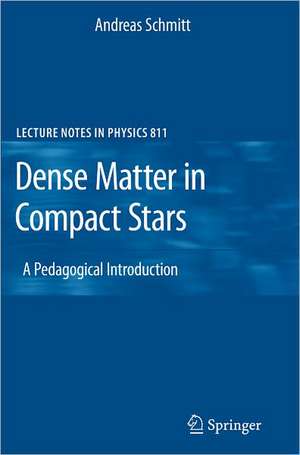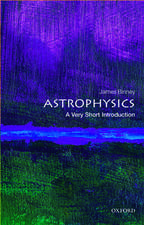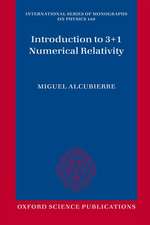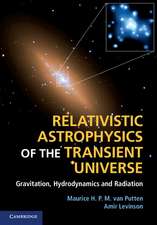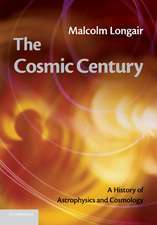Dense Matter in Compact Stars: A Pedagogical Introduction: Lecture Notes in Physics, cartea 811
Autor Andreas Schmitten Limba Engleză Paperback – 4 sep 2010
Din seria Lecture Notes in Physics
- 19%
 Preț: 423.99 lei
Preț: 423.99 lei - 17%
 Preț: 360.73 lei
Preț: 360.73 lei -
 Preț: 429.22 lei
Preț: 429.22 lei - 17%
 Preț: 427.62 lei
Preț: 427.62 lei - 17%
 Preț: 460.25 lei
Preț: 460.25 lei -
 Preț: 427.96 lei
Preț: 427.96 lei -
 Preț: 481.93 lei
Preț: 481.93 lei - 17%
 Preț: 494.64 lei
Preț: 494.64 lei -
 Preț: 281.90 lei
Preț: 281.90 lei - 17%
 Preț: 493.20 lei
Preț: 493.20 lei - 17%
 Preț: 426.72 lei
Preț: 426.72 lei -
 Preț: 365.15 lei
Preț: 365.15 lei -
 Preț: 374.52 lei
Preț: 374.52 lei -
 Preț: 407.98 lei
Preț: 407.98 lei - 20%
 Preț: 428.12 lei
Preț: 428.12 lei -
 Preț: 263.30 lei
Preț: 263.30 lei - 15%
 Preț: 593.73 lei
Preț: 593.73 lei - 15%
 Preț: 528.13 lei
Preț: 528.13 lei -
 Preț: 493.12 lei
Preț: 493.12 lei - 17%
 Preț: 425.68 lei
Preț: 425.68 lei -
 Preț: 280.65 lei
Preț: 280.65 lei -
 Preț: 163.41 lei
Preț: 163.41 lei - 18%
 Preț: 726.59 lei
Preț: 726.59 lei -
 Preț: 394.84 lei
Preț: 394.84 lei - 15%
 Preț: 709.63 lei
Preț: 709.63 lei - 15%
 Preț: 623.90 lei
Preț: 623.90 lei - 20%
 Preț: 476.91 lei
Preț: 476.91 lei - 15%
 Preț: 428.05 lei
Preț: 428.05 lei -
 Preț: 342.78 lei
Preț: 342.78 lei - 18%
 Preț: 851.93 lei
Preț: 851.93 lei -
 Preț: 346.61 lei
Preț: 346.61 lei -
 Preț: 391.57 lei
Preț: 391.57 lei - 15%
 Preț: 633.16 lei
Preț: 633.16 lei -
 Preț: 451.71 lei
Preț: 451.71 lei - 5%
 Preț: 1497.80 lei
Preț: 1497.80 lei -
 Preț: 374.85 lei
Preț: 374.85 lei -
 Preț: 380.07 lei
Preț: 380.07 lei - 15%
 Preț: 516.14 lei
Preț: 516.14 lei - 15%
 Preț: 583.78 lei
Preț: 583.78 lei - 15%
 Preț: 508.60 lei
Preț: 508.60 lei -
 Preț: 469.71 lei
Preț: 469.71 lei -
 Preț: 388.90 lei
Preț: 388.90 lei - 15%
 Preț: 500.24 lei
Preț: 500.24 lei -
 Preț: 386.52 lei
Preț: 386.52 lei - 15%
 Preț: 472.88 lei
Preț: 472.88 lei -
 Preț: 424.27 lei
Preț: 424.27 lei -
 Preț: 380.07 lei
Preț: 380.07 lei - 15%
 Preț: 500.01 lei
Preț: 500.01 lei
Preț: 346.77 lei
Nou
Puncte Express: 520
Preț estimativ în valută:
66.36€ • 69.45$ • 55.23£
66.36€ • 69.45$ • 55.23£
Carte tipărită la comandă
Livrare economică 31 martie-14 aprilie
Preluare comenzi: 021 569.72.76
Specificații
ISBN-13: 9783642128653
ISBN-10: 3642128653
Pagini: 160
Ilustrații: X, 147 p. 23 illus.
Dimensiuni: 155 x 235 x 9 mm
Greutate: 0.23 kg
Ediția:2010
Editura: Springer Berlin, Heidelberg
Colecția Springer
Seria Lecture Notes in Physics
Locul publicării:Berlin, Heidelberg, Germany
ISBN-10: 3642128653
Pagini: 160
Ilustrații: X, 147 p. 23 illus.
Dimensiuni: 155 x 235 x 9 mm
Greutate: 0.23 kg
Ediția:2010
Editura: Springer Berlin, Heidelberg
Colecția Springer
Seria Lecture Notes in Physics
Locul publicării:Berlin, Heidelberg, Germany
Public țintă
GraduateCuprins
Mass and Radius of the Star.- Basic Models and Properties of Dense Nuclear Matter.- Superconductivity and Superfluidity in a Compact Star.- Neutrino Emissivity and Cooling of the Star.- Discussion.
Textul de pe ultima copertă
The purpose of these lectures is to address the following two strongly coupled issues:• What is the ground state (and its properties) of dense (quark) matter?• What is the matter composition of a compact star?In order to fulfill their primary goal - to remain both concise and accessible to the beginning graduate student or other newcomers to the field - the only prerequisites are a working knowledge of statistical mechanics and thermodynamics as well as a first course in quantum field theory. More advanced material will be introduced as the text progresses and an appendix covers basic elements of thermal quantum field theory at finite chemical potential.Instead of developing all relevant formal tools (which is not even fully possible in the regime of QCD considered here), calculations are physically motivated, making the reader familiar with the theories and technicalities by “learning by doing”. In this way these lectures will guide and prepare the reader towards further investigations and own theoretical research in this exciting field at the interface of nuclear, particle and astrophysics.
Caracteristici
The most elementary and concise introduction to this topic Guides the reader rapidly towards a level suitable for own research through a "learning by doing" approach Written in a style suitable as either textbook or for self-study Includes supplementary material: sn.pub/extras
